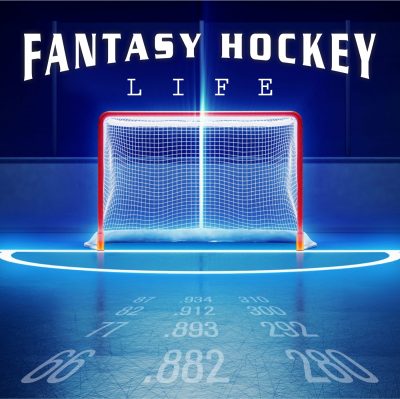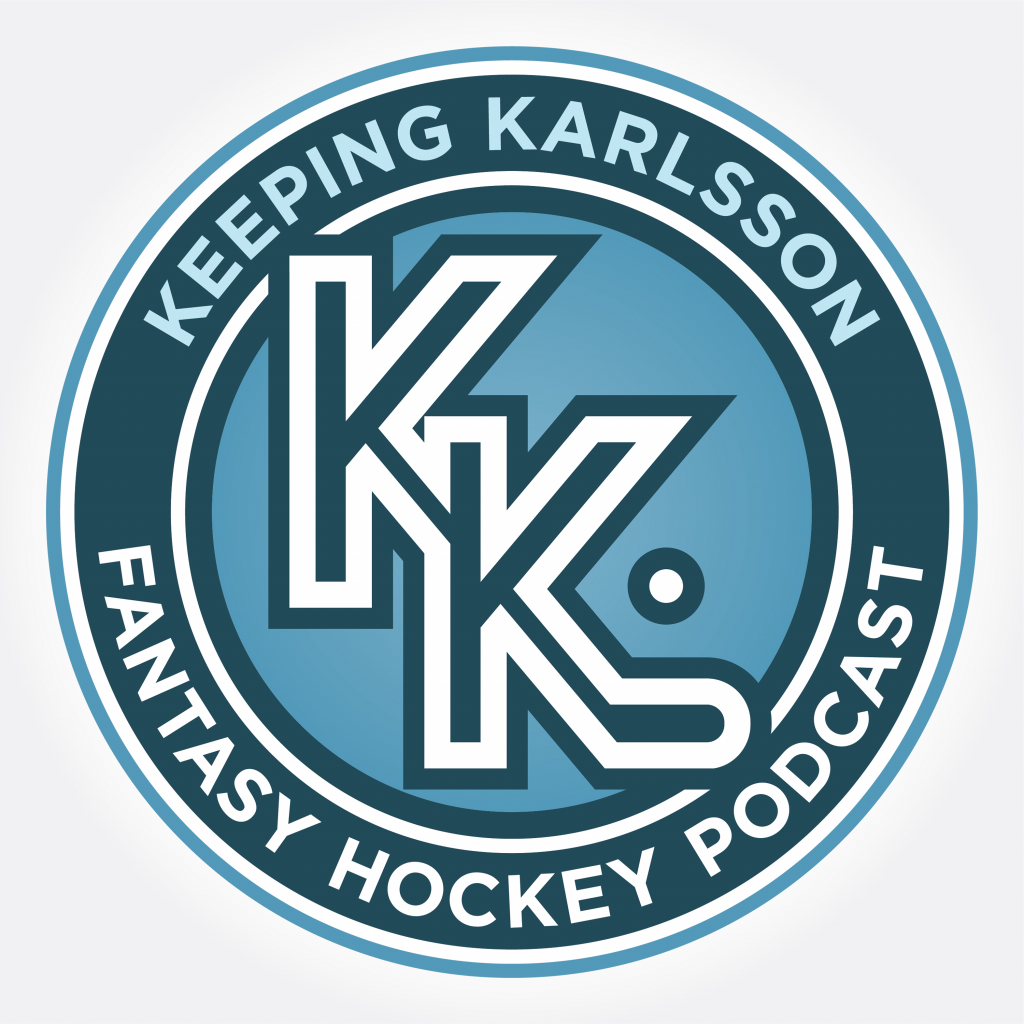Welcome back to another edition of the Roos Lets Loose monthly mailbag, where I answer your fantasy hockey questions by giving advice that should be useful to all poolies even if they don't own the specific players being discussed. As a reminder, if you want your fantasy hockey question(s) answered in the next mailbag, check out the end of the column, where I explain the ways to get it/them to me as well as the details you should provide when sending. The earlier you send a question the more likely it is to be included in the mailbag, and the deeper dive I can provide with my reply.
Question #1 (from Thomas)
Is it time to try trading Thomas Harley for Miro Heiskanen in a keeper?
It's amazing how in fantasy the unthinkable suddenly can become plausible. It was rightfully thought by most that Heiskanen, due to making $8.45M through 2028-29 and having impressed in 2022-23 with 73 points, was among the best young d-men to own. Fast forward to now though, and Heiskanen, even prior to getting hurt, had regressed to a mere point per every other game scorer. Suddenly he might not be as much of a golden boy as we thought.
The thing to consider is that he is not far enough removed from his 2022-23 output to see his value dip to be as low as to only command Harley in return. If I were a Heiskanen owner, instead of trying to move Heiskanen in a deal involving Harley, I'd try to make a separate deal to acquire Harley as insurance so to speak. That way, your bases are covered. This is important because although, as I've said many times in my columns, Dallas stifles the production of its forwards by limiting their ice time, they do not do that with their defensemen, as Heiskanen takes the ice for upwards of 25 minutes per game, and two-thirds of Dallas' PP Time. In fact, going back to 2022-23, Heiskanen sits tenth among all d-men in total TOI, and more than half those ahead of him have played 10+ more games. It's a similar story on the PP, as he ranks ninth over these three years. Since 2022-23, the PP has been a weaker spot for him, as Heiskanen ranks 13th in total PPTOI, but his 28 cumulative PPPts only puts him in a tie for 22nd. This season is far, far worse though, as he ranks fourth in PP minutes, but tied for 33rd in PPPts.
Can it go even more downhill? I'm afraid the answer is yes, as 75% of Heiskanen's assists this season have been secondary, when he'd been in the 41-52% range in the prior three seasons. His IPPs also, not surprisingly, are on pace to drop for the second season in a row both overall and on the PP.
Is there any good news? Not really, as his 5×5 team SH% is 8.8%, but that is down only slightly from the 9.1% and 9.3% it was in the prior two seasons. Also, although Heiskanen's SOG rate is also down from 2022-23, it's not by much, and it's been accompanied by a drop in SH% So those two things might mean an uptick in points; however, it would not be nearly enough to right his ship.
So why is it that I say not to trade him? For one, I think his value right now, though more than Harley still, is low enough that it is less risky to keep him than to trade him. It is indeed possible that Heiskanen will be shifted to become more of a defensive presence, ceding offensive roles to Harley. But that is why I advocate for getting Harley as a hedge or safety net of sorts. It is likely that the Harley owner will see your dilemma and make you pay to get him; however, Dallas is a strong team and being able to know you'll own whoever ends up being put on PP1 is key. Plus, we saw last season that Harley and Heiskanen can coexist in a manner that sees both do well. Not as well for Heiskanen as he did in 2022-23, but well enough, especially when factoring in Harley's numbers. In short, I'd hold and hope with Heiskanen, and try to get Harley by using other players. Good luck!
Question #2 (from Jon)
This is the first year of a 12 team, H2H, keep 5 (but only up to three times and no one drafted in the first round can be kept), no cap league. Categories are G/A/PIM/PPP/SHP/GWG/SOG/FW/HIT/BLK for skaters and GS/W/GAA/SV%/SO for goalies, and each team has a minimum of 3 goalie appearances per week. Rosters are 3C, 3LW, 3RW, 1F, 4D, 1UTIL, 2G, 5 Bench, 2IR, 3IR+, 1NA. Each team can make up to 15 adds per week, with 2 day waivers for dropped players. Offseason trading is allowed, but of course I'm not sure how active it will be since this is the first season.
The way it will work starting with the draft next season is the first five rounds will comprise your keeps, meaning that next season anyone picked in the 6th round becomes unkeepable. In order to prevent tanking, it is the 8th place team who gets the best chance at the first overall pick, and 8 teams make the fantasy playoffs.
I'm going for it this year, and in doing so have acquired three players (Mikko Rantanen, Cale Makar, and Nikita Kucherov) who were all first rounders and thus cannot be kept. I'm also keeping an eye on my future though and would like to think about having the best possible keepers. I'm pretty sure I want to keep Kirill Kaprizov, Jack Eichel, Tage Thompson, and Zach Werenski for 4 of my 5 spots.
But who to keep for the 5th spot is a toughie and I think it will boil down to Zach Hyman, Jason Robertson, or Roman Josi. Others who are options, but I don't see as in the mix, are Adin Hill, Anthony Stolarz, Kevin Lankinen, Joel Eriksson-Ek, Sam Bennett, Tom Wilson, Alex Tuch, Steven Stamkos, Keifer Sherwood, Jakub Chychrun, Jonathan Drouin, Matthew Olivier, and Gabriel Landeskog.
Some observations I've made based on season one of the league are lots of teams are starting 5 centers (using the 1F, 1UTIL spots) due to the FOW category. Goalies also are hoarded, so I expect many to be kept. Trading is very active.
My questions are:
1) Who would you recommend as my 5th keeper?
2) Would you recommend trading for a goalie for my 5th keep instead? Despite the 5 goalie categories having pretty significant weighting, I did "Zero G" this year and it worked well, but maybe I got lucky?
3) Based on the categories, ignoring 1st rounders, and considering the 3 year keep limit (factoring in age related decline/improvement), who would your dream 5 keeps be? I'd imagine Jack Hughes, Quinn Hughes would make the cut? What about Connor Bedard or Macklin Celebrini?
4) The GMs with Nathan MacKinnon (12th place), Auston Matthews (7th), and Brady Tkachuk (5th), each of whom would be an unkeepable first rounder, might be willing to trade them away because they are unlikely to win this year. I'm having trouble placing the value for one of those players with the pick structure that we have. Is a 6th (best pick) and a streamer for Matthews and a 22 (worst pick) a good benchmark? That's what another GM paid for Leon Draisaitl but trades have been all over the map otherwise.
Before I answer Jon's questions, I want to applaud Jon for giving me everything I could've asked for so as to be able to best provide answers. Those of you reading, please use this as a blueprint for when you send in your questions, as sometimes there might be things you include that turn out not to be key for me to know, but best to err on the side of inclusion since if it's something not relevant I can just not put it into the column or not factor it into my reply to your question(s).
First off, if I understand correctly that keepers will comprise the first five rounds of next year's draft, but none of those kept in the first round this year can be kept, then I want to get as many first rounders on my team as I can if I'm making a run this season. Yes, you don't want to decimate your team such that you won't have five quality keepers; however, five keepers is not a lot and you appear to have enough to spare to make a run at MacKinnon, Matthews or Tkachuk. To answer your last question first, do try and get one of those three. Yes, it is difficult to put a value on them, as although they cannot be kept they also are perfect rentals, and would thus be coveted. I feel like the price paid for Draisaitl would be more than I'd hope to part with though, as presumably all the first rounders from this year's draft will be taken in the sixth-round next season, making it so not having your sixth rounder would be a tough pill for you to swallow. You need to determine if the number of first rounders who might be traded is more than the number of potential suitors. If so, then I think you perhaps wait until others pay through the nose and then swoop in and try to offer less, since that GM will want to get something, as otherwise they lose the player with nothing to show for it.
Turning to your second question, I am not a huge advocate of "Zero G;" but in a league with only five keepers per team, few, if any, goalies should be kept. When push comes to shove and teams look to their best keeps, I think those who opt for a goalie, other than maybe the best of the best, are taking a huge risk, and you should not take that risk.
For your third question, I think your list skews way too young. With the three year limit, my dream five would be Connor McDavid, Cale Makar, Leon Draisaitl, Nathan MacKinnon, and Nikita Kucherov. Quinn and Jack are not far behind, but the best keepers for this league are, simply put, the best players. I'd even go so far as to say I'd not change them even if there wasn't a three year keeper limit. Always get the best there is now, because although possibly getting one's hooks into the next elite player before they are elite is a great feeling, you owe it to yourself to stick with those who are proven to be elite.
Lastly, let's see about your fifth keeper. For Josi, I've noted a couple times recently that he is a member of a very elite club by having scored at a point per better twice between ages 30 and 34, with the others being Ray Bourque, Larry Murphy and Paul Coffey. The issue is although Bourque fared well at age 35, Josi was not quite in Bourque's echelon, plus even Bourque then went downhill, whereas Murphy never had another season better than 52 points and Coffey became a band-aid boy. If your hope is what we're seeing from Josi this season is a blip in the radar, don't count on it, and in fact it might only get worse from here. On the plus side, that might make it easier to stomach having him be part of a trade package where you land one of the remaining unkeepable first rounders.
With Hyman, I do feel he was a beneficiary of his environment, but for whatever reason the magic has worn off. I'd be less concerned were it not for him having put up not great numbers in his first season with the Oilers, which many had forgotten. He remains on PP1, but if you think the data for Heiskanen was bad, consider that Hyman has logged the 30th most PP minutes among all forward going back to 2022-23, but stands only tied for 50th in PPPts, so things could get even worse if he loses that gig.
As for Robertson, I've covered him too several times, with the issue being he is not getting the ice time needed for him to thrive. Until/unless that changes, consider him a point per game player. But that is pretty good, since his floor is barely lower, and if somehow he gets true top line deployment, then he could explode. To me, he's the easy keep of the three. None of the other contenders that you listed would cause me to rethink that decision. I'd end by saying something I've said a lot lately too, which is to trade Tom Wilson before he succumbs to "big hitter" regression. Good luck!
Question #3 (from Matt)
I'm looking for some advice with my goalie situation in a one-year H2H league. The goalie categories are W, GAA, SV and Shutouts. It's a weekly league, so we set rosters on Mondays. We also have two goalie spots for the week, and have a league rule that you can only have two goalies on your roster unless a third is on the IR. To start the season I was a tandem of Joseph Woll and Anthony Stolarz, but with Stolarz’s injury I managed to pick up Frederick Andersen. My question is over the course of the rest of season what do you feel is the better play, going back to Woll and Stolarz, or dropping one of them to keep Andersen, in which case who would I drop of those two?
Like last season, Andersen has missed a huge chunk of time. But unlike 2023-24, he did not come back and play well right from the get go. What's also different is Andersen is a UFA after this season, making it so the Canes have an incentive to play Pyotr Kochetkov more, to poise him to be the everyday #1 next season. Still, Carolina is a strong team, and Andersen figures to get as many starts over the remainder of the season as Woll or Stolarz, which would make him a viable second goalie to consider.
Woll performed quite well in Stolarz's absence, but Stolarz looked like he had no rust whatsoever in his first start upon his return. Unlike Andersen, Stolarz is inked for another season, making it so the Leafs likely will want to keep him in the mix. Also, Toronto has tried pretty much everything to make a deep playoff run, with no success. What they haven't attempted as yet is a true goalie tandem, and my guess is they do try to keep playing both Woll and Stolarz on a roughly 50/50 basis over the rest of the regular season.
The dilemma is that Anderson is unlikely to play more than either or both Woll or Stolarz. But if you went with Andersen, you'd have to guess which of Stolarz or Woll would be better, plus you'd need to hope that Carolina keeps playing Andersen as much or more than whichever of Woll or Stolarz you decide not to hold onto.
Looking at the categories, volume of starts matters; however, as is clear from what has already been covered there is no obvious choice to address that. Carolina is the "better" team, so they figure to get more wins; however, it might be that with Stolarz and Woll both healthy and playing, Toronto will fare better than it has in the time when Stolarz was on the shelf.
This is a case where I don't see an obvious answer. As such, I'd say go with your gut. If it was me, I'd probably keep the Toronto tandem, since that way you get every win, plus if one of them gets hurt or is anointed the #1 you'll be covered. I fear that Andersen is too old and rusty to be counted on as he had been, plus Carolina might lean more on Kochetkov. Good luck!
Question #4 (from Ed)
This season David Pastrnak has either performed poorly, at least by his standard, or been scorching, with not much in between those extremes. For those of us in H2H leagues, is he Jeckyl or Hyde, or ought we expect him to settle in the middle and be more like his normal self?
Just when it looked like Pasta might be in danger of a non-elite season, he's gone supernova, lifting his production from under a point per game to nearly a 100-point pace in basically just one month. But I can understand that with teams reading for the all-important fantasy playoffs, they want to know which Pasta they're likely to get.
From where I sit, there are metrics pointing in both directions, suggesting that where he is now, i.e., a notch below his usual pace, is likely where he'll be when all is said and done for 2024-25. For one, despite potting 14 goals in a recent 14-game stretch, his SH% is still below his career norm. Also, with him taking fewer SOG per game than in any of his last three seasons, one would expect that if anything he has room to improve there. On the other hand, his OZ% is 68.6%, which, although not in uncharted territory, is well above what it was last season, plus the Bs are not the dominant team they once were, meaning that in order for Pasta to start such a high percentage of shifts in the offensive zone it might be difficult for him to maintain his TOI per game, which would hurt his production.
Pasta also has done all he could to score, with an overall IPP which stands at nearly 90%. That is staggeringly high, and a testament to his skill, as he really is doing things by himself at this point. The issue is that number can only go down, and, with that, so would his scoring. Still, what might help offset that is his secondary assist rate is 30.0%, which would be a good bit lower than either of his last two 110+ point pace scoring seasons. Also, his team 5×5 SH% is 9.6%, which for many would be solid, yet for Pasta it is a drop from the 11.3% and 10.9% marks it was the past two seasons.
As for the team around him, they are not doing him any favors, sitting at third worst in PP% and just outside the bottom five in the league in goals for per game, with the former at 14.5% (versus 22.2% last season) and the latter at 2.75 per game (versus 3.26 last season). It's a marvel Pasta is doing as well as he is, but also a concern since although things are not likely to get any worse, it's not like the Bs have had many major injuries or other barriers stopping them from doing better, so this might be an "it is what it is" situation, and what it is sure is not helping Pasta.
In sum, you've heard me use the expression a rising tide lifts all boats. Well, a sinking tide lowers them too, even for players as outstanding as Pasta. It seems a marvel that he is doing as well as he is given the team around him. lthough hoping for him to keep up his torrid pace is unrealistic, he is a good bet to stay right around a 100 point pace, which really is a marvel all things considered. One hope though is if Bs somehow stay in playoff contention, meaning they'd be a good bet to be buyers at the deadline, and any added talent would only benefit Pasta. Good question!
Question #5 (from Pete)
With many players who sign UFA deals ending up disappointments, and many of those set to be RFAs already having made their mark, can you give your recommendations of players who will be RFAs and could see the biggest boosts next season? And do you think there are any UFAs to be who might do better than expected?
Let's start with UFAs, and not go with obvious names like Mikko Rantanen, Mitch Marner, John Tavares, Mikael Granlund, or Nikolaj Ehlers. I like Aaron Ekblad. I think we can all agree his 77-point pace season was likely due to how great the Panthers were. But he's still only 29; and, other than that season, he's never run PP1. He also had a three season stretch of 2.9+ SOG per game. He is going to get paid very well; and if that brings with it a real chance to be a PP QB, he could push 60 points.
Brock Nelson also is a player who, although no longer as under the radar as he once was, has never been a top line center. That could change depending on where he lands. As far as upside, think Sean Couturier in his prime, namely a two-way center who also racked up points. Nelson is 33 years old though, making it so there is some risk of a letdown.
Don't sleep on Neil Pionk, who, let's not forget, was a point-per-game player through nearly the first quarter of the season, plus put up 25 PPPts one season for the Rangers when he was allowed to run PP1. I feel like he has very real upside.
As for a longshot, Jack Roslovic is still only 28 and is putting up decent numbers despite a low TOI and PP scraps. If he goes to a high-octane team and can be the second line center, he has potential.
In terms of RFAs who might make a bigger mark, Jonathan Berggren comes to mind, as his season-long stats seem terrible but he's done well of late and is old enough to be able to succeed if truly given the chance, which might happen once he gets a raise.
I also think that although Philipp Kurashev has had opportunities this season, once he is making more he'll be given a longer leash, and he does seem to have the talent to be able to thrive. Plus, he might be able to be obtained a lot cheaper now than this time last season.
And if indeed Pionk goes elsewhere, look for Dylan Samberg to step into his role and perhaps be at or above a point per every other game. He's already shown he can be a top-four guy, so seemingly all he needs is better deployment, which will come based on one or both of him getting a raise and Pionk inking a deal to go elsewhere.
I also like the odds of Luke Evangelista to see gains, as Nashville's offseason revamp did not go well, so chances are they mix things up, with the talented Evangelista perhaps being a beneficiary. He'll also be hitting his 200-game breakout threshold.
I feel like Jack Quinn, who has been red-hot but also a healthy scratch this season, with not much in between, could make strides by commanding a larger role given his larger paycheck. He too will be at his 200-game breakout threshold.
Lastly there's Matt Coronato. In truth, he's already doing pretty well; but once paid more he should cement a spot in the top-six and on PP1, and could make a big leap. Good question!
Question #6 (from Charles)
How "for real" do you consider what we're seeing from Zach Werenski? Assuming he continues to stay as hot as he's been, which defensemen should be picked ahead of him in a points only, one year league for next season?
It may seem like Werenski's ascent has come from nowhere, but that is not really true. For one, his 400-game breakout threshold was arguably postponed due to his 2022-23 injury. And in Q4 of 2023-24, he had 19 points in 20 games while taking 70 SOG. Although the Columbus forwards have done well, I think he is shaping up to be for the Jackets what Roman Josi was to Nashville for a number of seasons, namely an unquestioned #1 D who is put into a position to thrive offensively.
Werenski has indeed been put into that position this season, seeing 2:30 more TOI per game yet barely any added SH duty and with an OZ% that is somehow higher than last season. Despite how well he's doing, his team 5×5 SH% is only 9.0%, after averaging 10.9% his past two seasons. Also, despite there being no argument that his PPIPP is sky high at nearly 80%, Columbus's forwards are not doing him any favors, ranking only in the middle of the pack in PP% despite being sixth in goals per game.
Also, Werenski's TOI actually is trending higher, such that in Q3 he is playing nearly half a game, and with that points are bound to come. His assist rate is reasonable, with under 50% being secondary. Plus, even though he has already set a career best in goals, his SH% is barely higher than his norm.
Looking at defensemen who, dating back to 1990-91, had a point per game or better season with 20+ goals and 275+ SOG, the list has just three names: Josi, Ray Bourque, and Al MacInnis. The good news is none of them was a one year wonder. The bad news though is MacInnis and Bourque had already been point per game players several years prior to age 27, which is how old Werenski is now. But Josi did it first at age 31. So Werenski seems to be in a middle ground, such that I'd expect him to do as well or better than Josi, but earlier and thus more times.
As for where Werenski should be drafted in a points only league next seasons, I'd say after Cale Makar and Quinn Hughes. But he's a candidate to go third overall, over Evan Bouchard, who has taken a bit of a step back but is still likely in a perfect spot to thrive. If it was me, I'd still go Bouchard third, since his team situation is so amazing. But if not Werenski third overall, then certainly fourth. Good question!
Question #7 (from Jeff)
What's your take on Dougie Hamilton? Looking back, he had one great season with Carolina, then it was downhill from there. He's already had a superb season for the Devils, and sure enough his scoring level is on pace to drop for the second season in a row since then. At age 31, is there a chance he rises to an elite level again?
It does seem like Hamilton has fallen into a pattern of faring best during his first season with a team, and then easing off the gas pedal. Also, I'm not even sure how much weight to put on his Carolina successes, as they both came when he played fewer than 60 games. In fact, other than Hamilton's 74 points in the 2022-23 season, his career best is only 50. That says a lot.
Let's not forget that despite his promise, Boston traded him at age 22, although that was precipitated by salary issues. Still, if they thought highly enough of him, they'd have made it work. Then Calgary dished him as well, as his effort level was questioned and there were issues with how he felt the team treated his brother.
Last season Hamilton had injuries and ceded PP1 to Luke Hughes even when healthy. Dougie is back on PP1 for 2024-25 yet still he's struggling. His SOG rate is under three per game for the first time in nearly a decade, and his TOI lower than it's been since prior to his successes in Carolina. Plus, while he still is only 31-year-old, he's in his 13th season, which is a lot of hockey having been played even if factoring in his past injuries or shortened seasons.
Also concerning is Hamilton's struggles this season despite his team shooting nearly 11% at 5×5 with him on the ice, plus his OZ% being higher than it's ever been. Yes, his IPPs have nosedived to an extent that one has to think there is realistic room for them to recover; however, the picture being painted is one of Hamilton perhaps not putting in the effort level needed to succeed. He is owed $9M per season still for another three campaigns; however, the Devils are a win now team, and it's not clear how long they'll stand by waiting for Hamilton to right his ship, especially when he's seemingly being put into as great a position to succeed as ever, yet is floundering.
I think there is a very real chance Hamilton is deemphasized. Ironically, even though the Devils are great, the best thing that might be able to happen to Hamilton is to be traded, since perhaps yet again that might cause him to up his effort as he's done in the past. Good question!
Question #8 (from John)
My league is pretty typical keeper multicat, but no FOW or PIM. I have one keeper spot left and need to decide between JJ Peterka and Alexis Lafreniere. Obviously, Laffy has the draft pedigree and looked to be hitting his stride last season, but JJP has done very well alongside Tage Thompson this season while Laffy has regressed. Who are you keeping in my shoes?
First off, Laffy was drafted in 2020, which was five drafts ago. I certainly agree that draft pedigree will help maintain a player's value if he doesn't perform great right out of the gate; however, there comes a time where not only does that stop, but there can be a 180, such that him not living up to expectations that come with being a first overall pick cause his value to be lower than it normally would be, due to the microscope under which he plays.
When is that time? I won't say there's a hard and fast rule; however, for a player like Laffy who has logged over 200 games and a handful of seasons, we've more certainly reached that point. Also, think about the fact that if one of your arguments for keeping a player drafted five years ago is his draft slot, doesn't that tell you that you're reaching in terms of ways to justify his continued value? Long story short, Laffy having been the first overall pick is no longer a redeeming quality, but rather, if anything, a strike against him. Plus, he still has the pressure to deliver, which in some cases can inspire a player but often will just make them do even worse.
Also, there just is not a lot to like when looking at Laffy's metrics. Yes, he has remained above two SOG per game; however, despite seeing a decent uptick in PP time his production with the man advantage is no better. And that is key, since many felt PP scoring was the missing link needed for him to make the leap into truly elite territory. He also is not producing despite a very high OZ%, and playing most of this season with one of the best of the best in the NHL in Artemi Panarin. In fact, one likely could argue that Panarin's production is being throttled because Laffy is an anchor on his line.
Also, despite Laffy still having fairly decent IPPs, when coupled with his 22% secondary assist rate, that combination is actually a bad thing. How so? If you get a high percentage of points, but have almost no secondary assists, it suggests the offense simply does not flow through you. Or to put it another way, Laffy is a passenger, rather than a contributor.
On the other hand, Peterka appears to be hitting his stride, and lo and behold it's right at his 200-game breakout threshold. His TOI is up by 90 seconds, the lion's share of which is PP time, and he looks to be now firmly fixed on PP1. Somehow Peerka's SOG rate is down; however, that might be indicative of him ceding the goal scoring role to Tage Thompson. Yes, Peterka's 5×5 team SH% of 13.2% is unquestionably high, and his IPPs not superb. But therein lies the difference between him and Laffy, which is Peterka finds ways to hit the score sheet, whereas Laffy does not.
I'm keeping Peterka here 100% of the time, as I think Laffy is running out of chances and already since the arrival of J.T. Miller is being deemphasized, and I'd say rightfully so. Good luck!
************************
I'm always looking for mailbag questions, so don't hesitate to sent them to me. You can get do so in one of two ways: (1) by emailing them to admin@dobbersports.com with the words "Roos Mailbag" as the subject line, or (2) by sending them to me via a private message on the DobberHockey Forums, where my username is "rizzeedizzee".
When sending me your questions, remember to provide as much detail about your league/situation as possible. Examples of things I need to know include what type of league you're in (i.e., limited keeper, dynasty, or one-year; roto vs. H2H; auction – if so, what the budget is – or non-auction), how many teams are in the league, does the salary cap matter, how many players are rostered (and of those, how many start at each position as well as how many bench and/or IR spots there are), what categories are scored and how are they weighted, plus other details if pertinent. If your question involves whether to pick up or drop a player, give me a list of top free agents available and let me know if the number of pick-ups is limited or if there is a priority system for pick-ups. If you're thinking of making a trade, it would be good to know not only the roster of the other team you might trade with but also where you stand in your categories. If your question involves keepers, in addition to giving me the options for who to keep, let me know if offseason trading is allowed and to what extent it is a viable option given your league. In sum, the key is to tell me enough for me to give you a truly proper answer, and for readers of this column to benefit from the answer/advice I provide. When in doubt, it's best to err on the side of inclusion since I can always omit or disregard things that don't matter.

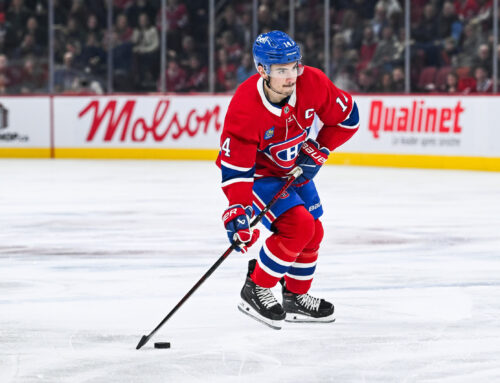
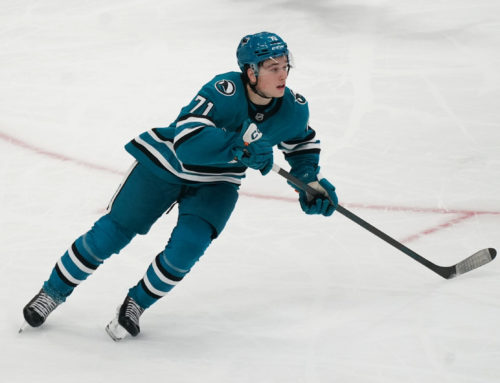
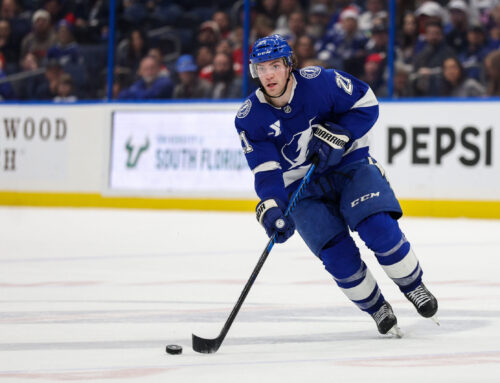
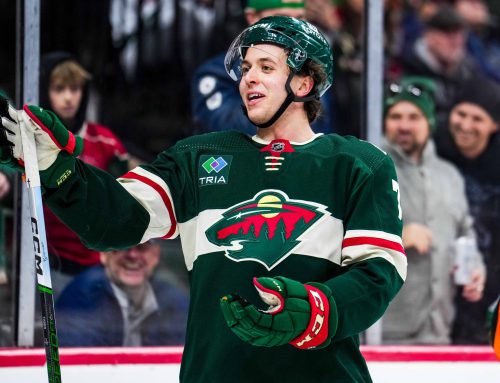
 FLA
FLA EDM
EDM NYR
NYR CGY
CGY MIN
MIN SEA
SEA S.J
S.J DAL
DAL